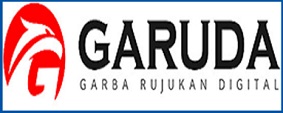Analyzing STEAM project-based learning in PAUD Terpadu 'Aisyiyah Nur'aini unit II Yogyakarta
DOI:
https://doi.org/10.26555/jecce.v6i2.8949Abstract
Project-based learning enables teacher to guide the learning process and development of various developmental aspects of students. One of them is through the STEAM project with three stages: preparation, development, and conclusion. STEAM is a collaborative learning that facilitates motivation and innovation allowing for students’ creativity. Hence, students can strengthen not only their cognitive aspect. Integrated Early Childhood Education (PAUD Terpadu) ‘Aisyiyah Nur’aini Unit Two Yogyakarta is a pilot school that implements STEAM project-based learning. However, no research has discussed the implementation. Therefore, the present study aims to know, analyze, and describe STEAM project-based learning. The research subjects, or the informants, were four classroom teachers for children aged five to six. The classes implement STEAM project-based learning. The research belongs to a case study with the data collected through interviews, observation, and documentation. The data were analyzed using Miles and Huberman techniques with three stages: data collection, data reduction, and conclusion drawing. The results showed several characteristics of STEAM project-based learning in PAUD Terpadu ‘Aisyiyah Nur’aini Unit Two. It emphasizes the students and provides them with critical and creative thinking and problem-solving through the teachers’ roles.
References
Al Afada, F. H. (2022). Penggunaan media loose part dalam pembelajaran pasca pandemi untuk usia 5-6 tahun di PAUD Terpadu Aisyiyah Nur’aini Unit Dua Yogyakarta. Universitas Ahmad Dahlan.
Al, M. et. (2018). Pengembangan soft skills peserta didik melalui integrasi pendekatan science, technology, eingeneering,art and mathematic (STEAM) dalam pembelajaran asam basa. Universitas Negeri Jakarta.
Amelia, M. N., & Nuraeni, L. (2021). Penerapan metode proyek berbasis STEAM untuk mengembangakan kemampuan mengenal huruf anak usia dini kelompok B. Jurnal Ceria, 4(2), 154.
Anhusadar, L. O. (2016). Kreativitas Pendidik di Lembaga PAUD. Jurnal Al-Ta’dib, 9(1), 80–91.
Azizah. (2020). Implementasi pembelajaran berbasis STEAM pada anak usia 5-6 tahun di TK IT Harapan. Jurnal Wawasan Pendidikan, 2(2), 62–69.
Gunawan, P. (2019). Paragraf: STEAM dengan Pendekatan Saintifik.
Imamah, Z., & Muqowim. (2020). Pengembangan kreativitas dan berpikir kritis pada anak usia dini melalui metode pembelajaran berbasis STEAM and loose part. Jurnal Studi Islam Gender Dan Anak, 15(4), 270–274.
Maharani, N. S. (2020). Penggunaan STEAM pada anak usia dini. Jurnal Akuntansi Syariah, 2(1), 57.
Mardiyah, L., & Hambali, H. (2022). Penggunaan media loose parts untuk mengembangkan kreativitas anak usia dini. Journal on Teacher Education, 4(1), 11–55.
Metafisika, P. (2020). Muatan STEAM pada anak usia dini. Jurnal Pendidikan, 4(1), 15–25.
Mukhlis. (2010). Problem Based Learning anak usia dini. Jurnal Pendidikan, 17(4), 180–214.
Norhikmah, R., Puspita, N. F., & Saudah. (2022). Inovasi pembelajaran di masa pandemi: Implementasi pembelajaran berbasis proyek pendekatan destinasi imajinasi. Jurnal Obsesi : Jurnal Pendidikan Anak Usia Dini, 6(5), 3908.
Nugroho, A. (2021). Higher Order Thinking Skills. PT Gramedia Widiasarana Indonesia.
Nurdiana, Hasiyati, & Marsono. (2020). Media Pembelajaran Bermuatan STEAM dengan Pemanfaatan Augmented Reality. BP PAUD DIKMAS DIY.
Prima, E., & Lestari, P. I. (2021). Pembelajaran sains bagi anak usia dini melalui pembelajaran berbasis proyek pada masa belajar dari rumah. Jurnal Undiksha, 5(1), 3–7.
Rohman, S. (2017). Membangun budaya membaca pada anak melalui program gerakan literasi sekolah. Jurnal Pendidikan Dan Pembelajaran Dasar, 4(1), 151–172.
Sanjaya, W. (2013). Penelitian Pendidikan (1st ed.). Prenadamedia Grup.
Sari, S. M. (2005). Peran ruang dalam menunjang Pperkembangan kreativitas anak. Jurnal Desain Interior, 3(1), 80–94.
Siregar, Z. H. (2021). Project Based Learning di Provinsi Kepulauan Riau melalui Program Pejuang Muda 2021 untuk meningkatkan kesejehteraan sosial. Jurnal Deputi, 2(1), 29–31.
Subramaniam, M. M., Ahn, J., Fleischmann, K. R., & Druin, A. (2012). Reimagining the role of school libraries in STEM education : Creating hybrid spaces for exploration. The Library Quarterly, 82(2), 161–182.
Sugiyono. (2015). Metode Penelitian Pendidikan Pendekatan Kuantitatif, Kualitatif, dan R&D. Alfabeta.
Sulisworo. (2019). Konsep Pembelajaran Project Based Learning. Alprin.
Wahyuningrum, L. Q. G., Puspitasari, S., & Rohmadheny, P. S. (2021). Optimalisasi Pembelajaran Daring Dimasa Pandemi. UAD Press.
Widowati, E., Sugiharto, S., Wahyuningsih, A. S., Husodo, A. H., & Istiono, W. (2020). Transformation Prospect of a Non Disaster-Prepared-School in Implementing Management of Child Safety Education. Unnes Journal of Public Health, 9(1), 34–42. https://doi.org/https://doi.org/10.15294/ujph.v9i1.34378
Downloads
Published
How to Cite
Issue
Section
License
Copyright (c) 2023 Miftahul Ichlas, Prima Suci Rohmadheny, Dwi Hastuti, Avanti Vera Risti Pramudyani

This work is licensed under a Creative Commons Attribution-ShareAlike 4.0 International License.
Authors who publish with this journal agree to the following terms:
- Authors retain copyright and grant the journal right of first publication with the work simultaneously licensed under a Creative Commons Attribution-ShareAlike 4.0 International License that allows others to share the work with an acknowledgement of the works authorship and initial publication in this journal.
- Authors are able to enter into separate, additional contractual arrangements for the non-exclusive distribution of the journals published version of the work (e.g., post it to an institutional repository or publish it in a book), with an acknowledgement of its initial publication in this journal.
- Authors are permitted and encouraged to post their work online (e.g., in institutional repositories or on their website) prior to and during the submission process, as it can lead to productive exchanges, as well as earlier and greater citation of published work (See The Effect of Open Access).











